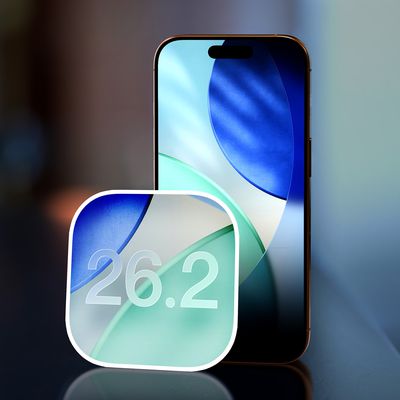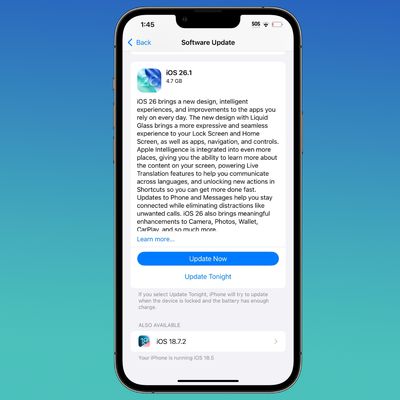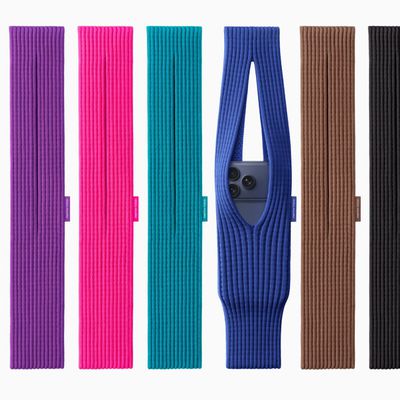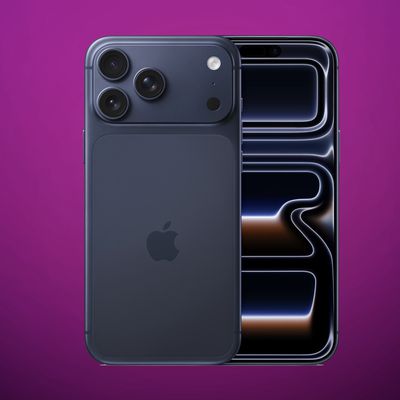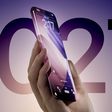T-Mobile USA Claims Next iPhone Chipset Will Support Carrier's AWS Bands
With the launch of the iPhone 4S, T-Mobile USA is now the only one of the four major U.S. carriers to not offer the iPhone, due in large part to the carrier's use of the Advanced Wireless Services (AWS) spectrum band for its 3G network, a situation that so far would require Apple to develop specific hardware compatible with the network. Some had hoped that the situation would be rectified over time by AT&T's planned acquisition of T-Mobile, but that deal has fallen apart in the face of scrutiny from regulators.

AllThingsD now reports on comments from T-Mobile CEO Philipp Humm again acknowledging that the AWS issue is an important reason for the carrier's lack of the iPhone, but reporting that the issue will be addressed both by migration of T-Mobile's spectrum bands and by new chipsets supporting AWS.
“The key reason we didn’t have the iPhone in the past is we are on different band than globally the market was,” Humm said. “That is something which will change over time. Chipsets are also evolving to be able to allow for more bands.”
As always, though, the decision is up to Apple, Humm acknowledges.
CNET has more on the topic from T-Mobile Chief Technology Officer Neville Ray, who specifically claims that Apple's plans for the next iPhone chipset include support for AWS.
Ray, however, said T-Mobile's unique spectrum would have required extra work to ensure the iPhone ran correctly on its network. But the next chipset that Apple plans to use will be able to overcome that hurdle, he said.
"The next chipset will support AWS," he said in an interview with CNET. "The challenge that existed in the past will go away."
Ray said he has seen the roadmap of chipsets that Apple plans to use, and knows it has that capability. But he noted Apple could choose to ignore that capability and not strike a deal with T-Mobile.
New LTE networks are another factor in the discussion, with rumors suggesting that the iPhone 5 may indeed support the faster technology with greater unification of network standards across carriers. But with LTE still being built out and carriers having achieved varying stages of progress on their efforts, the iPhone and other smartphones will continue to require compatibility with 3G networks as a fallback option where LTE won't yet be available.
Update: In a clarification to 9to5Mac, T-Mobile reports that Ray said only that Apple could use an AWS-capable chipset in a future iPhone model, not that he had specific knowledge of Apple's roadmap.
Popular Stories
We're getting closer to the launch of the final major iOS update of the year, with Apple set to release iOS 26.2 in December. We've had three betas so far and are expecting a fourth beta or a release candidate this week, so a launch could follow as soon as next week.
Past Launch Dates
Apple's past iOS x.2 updates from the last few years have all happened right around the middle of the...
Apple is expected to launch a new foldable iPhone next year, based on multiple rumors and credible sources. The long-awaited device has been rumored for years now, but signs increasingly suggest that 2026 could indeed be the year that Apple releases its first foldable device.
Subscribe to the MacRumors YouTube channel for more videos.
Below, we've collated an updated set of key details that ...
Apple AI chief John Giannandrea is stepping down from his position and retiring in spring 2026, Apple announced today.
Giannandrea will serve as an advisor between now and 2026, with former Microsoft AI researcher Amar Subramanya set to take over as vice president of AI. Subramanya will report to Apple engineering chief Craig Federighi, and will lead Apple Foundation Models, ML research, and ...
Netflix has quietly removed the ability to cast content from its mobile apps to most modern TVs and streaming devices, including newer Chromecast models and the Google TV Streamer.
The change was first spotted by users on Reddit and confirmed in an updated Netflix support page (via Android Authority), which now states that the streaming service no longer supports casting from mobile devices...
Apple is encouraging iPhone users who are still running iOS 18 to upgrade to iOS 26 by making the iOS 26 software upgrade option more prominent.
Since iOS 26 launched in September, it has been displayed as an optional upgrade at the bottom of the Software Update interface in the Settings app. iOS 18 has been the default operating system option, and users running iOS 18 have seen iOS 18...
Cyber Week is here, and you can find popular Apple products like AirPods, iPad, Apple Watch, and more at all-time low prices. In this article, the majority of the discounts will be found on Amazon.
Note: MacRumors is an affiliate partner with some of these vendors. When you click a link and make a purchase, we may receive a small payment, which helps us keep the site running.
Specifically,...
2026 could be a bumper year for Apple's Mac lineup, with the company expected to announce as many as four separate MacBook launches. Rumors suggest Apple will court both ends of the consumer spectrum, with more affordable options for students and feature-rich premium lines for users that seek the highest specifications from a laptop.
Below is a breakdown of what we're expecting over the next ...
The updated specs of the M5 iPad Pro may point toward a major new feature for Apple's next-generation Studio Display expected in early 2026.
Apple's latest iPad Pro debuted last month and contains one display-related change that stands out: it can now drive external monitors at up to 120Hz with Adaptive Sync. The feature should deliver lower latency, smoother motion, and fewer visual...
Apple recently teamed up with Japanese fashion brand ISSEY MIYAKE to create the iPhone Pocket, a limited-edition knitted accessory designed to carry an iPhone. However, it is now completely sold out in all countries where it was released.
iPhone Pocket became available to order on Apple's online store starting Friday, November 14, in the United States, France, China, Italy, Japan, Singapore, ...
Apple's iPhone 17 lineup is selling well enough that Apple is on track to ship more than 247.4 million total iPhones in 2025, according to a new report from IDC.
Total 2025 shipments are forecast to grow 6.1 percent year over year due to iPhone 17 demand and increased sales in China, a major market for Apple.
Overall worldwide smartphone shipments across Android and iOS are forecast to...



